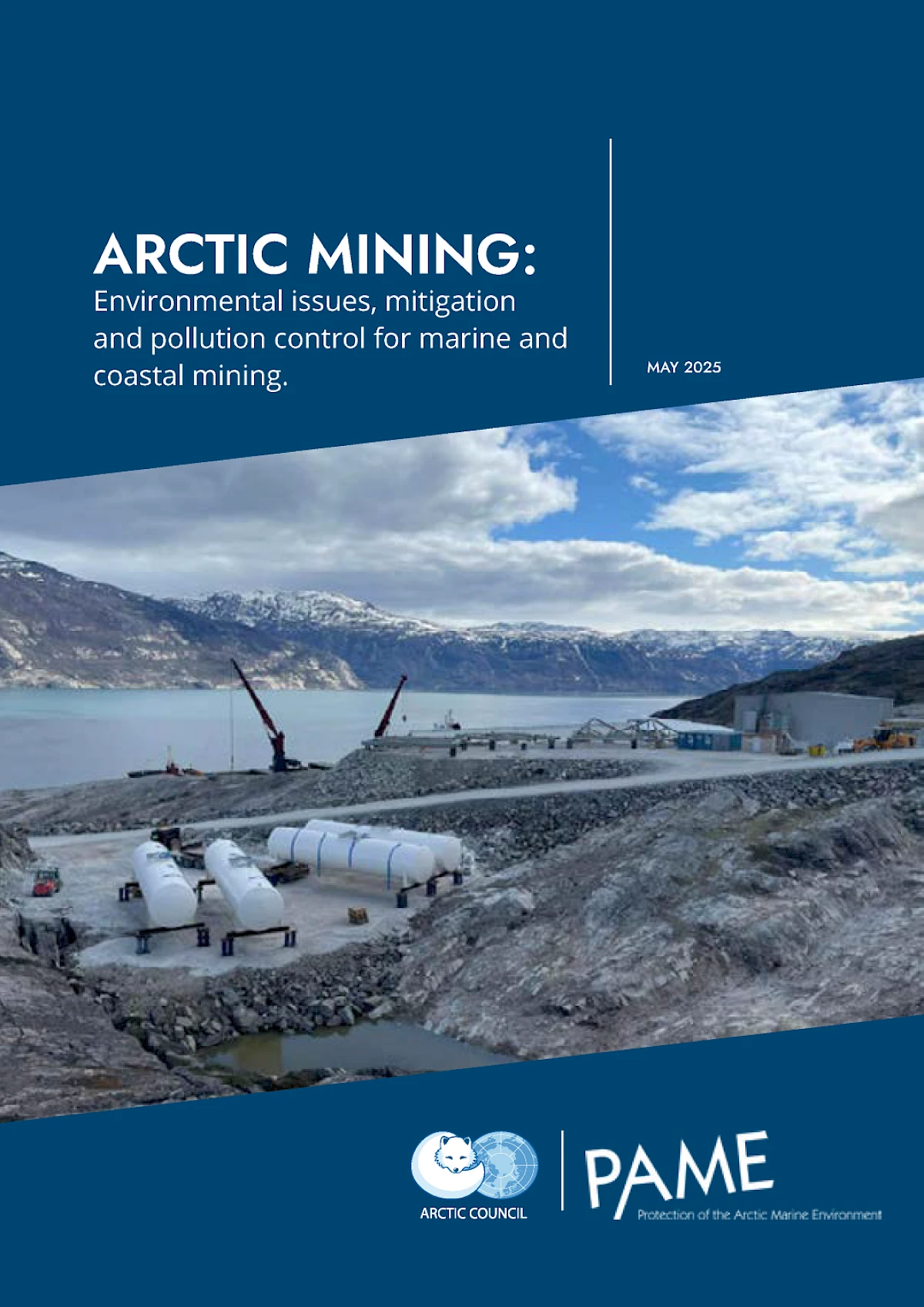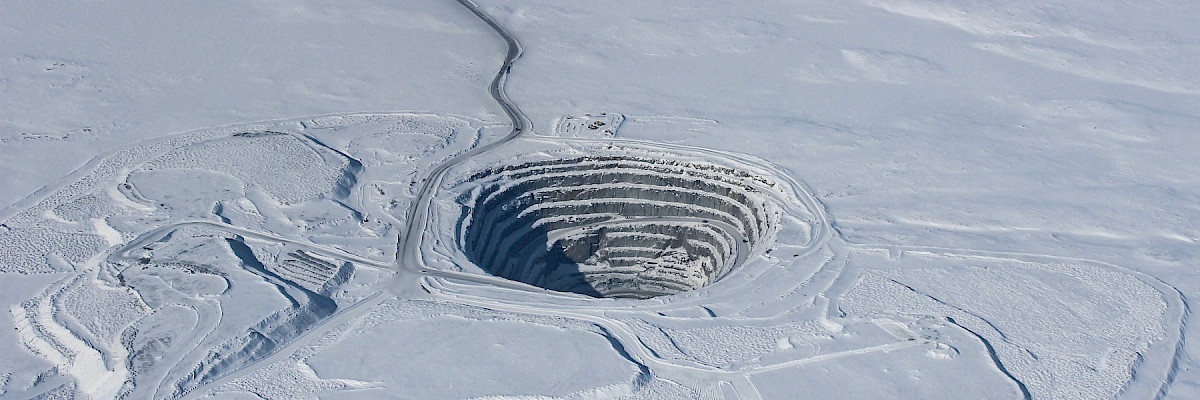
Arctic Mining: Environmental issues, mitigation and pollution control
Arctic coastal mining has a long history. Historically, most of these mines discharged their waste rock and tailings into the ocean. The practice of depositing waste rock and tailings from mines into the ocean as well as discharging mining wastewater has the potential to affect the marine environment.
Currently there are few operations that use the ocean for disposal of waste rock and tailings. But where it is taking place or being planned in the Arctic, it employs submarine disposal of tailings (STD) or deep-sea tailings placement (DSTP). The discharge of mining wastewater is more common. There are also placer mining operations planned that consider discharge of waste sediments and water into the ocean.
The idea for this project originated within PAME, where a concern was raised about the disposal of tailings from onshore mining operations onto the seafloor. This led to a broader reflection on the impacts of mining operations on the marine environment. Many Arctic governments support the development of a mineral extraction industry, provided it operates in an environmentally responsible manner and considers socio-economic impacts to local communities. However, the environmental impact of existing and future mining operations is often debated.
In 2022 Canada and the Kingdom of Denmark decided to move forward with a survey of coastal and marine mining operations in the Arctic. The survey of active mining operations in the Arctic was initiated, ranging from marine operations to land-based operations with discharge of water or dust to the marine environment, or causing marine underwater noise. Information was collected on mines in the United States, Canada, Greenland, Norway, and Finland, while some Arctic States chose not to participate in the project.
The survey aimed to explore the developments and outstanding issues related to environmental performance in recent decades, as well as identify lessons learned that could be shared for the benefit of the environment.
This report aims to share the results of the survey on active coastal and marine mining operations.
An online workshop was convened with leading scientists, industry, Indigenous Peoples and community organizations, government regulators and non-governmental organizations to exchange ideas, best practices and lessons learned related to Arctic mining.
The online workshop was called: Arctic Mining: Environmental issues, mitigation and pollution control for marine and coastal mining. The workshop covered a broad scope and had 70 participants, from Alaska to Finland.
A webpage was developed with the presentations from the workshop, as well as supporting material, and with the potential to be further developed as a platform to exchange information.
The main findings from the workshop have been included in the discussion in chapters 3 and 4 of the project report.
REPORT OUTLINE
- Introduction
- Overview of national strategies and regulations for environmentally safe raw material extraction
- Approach
- Results and Discussion
- Status and type of mining operation
- Main target minerals and metals, and size of mining operations
- Waste rock and tailings, production and disposal methods
- Dust and air pollution issues
- The transportation of the ore and mineral concentrates - Noise issues
- Biodiversity issues – Assessing the footprint
- Perspectives
- Annex A: Overview of mines included in the survey
- Annex B: Questionnaire for the mine inventory survey
- Annex C: Proceedings of the 2023 Workshop: Arctic Mining: Environmental issues, mitigation and pollution control for marine and coastal mining
- Annex D: Selected references
Map repository - Arctic mines
Much work went into producing maps for the report. They illustrate not only the location of the mines from the project, but several aspects of the mines, including the type of operation, how much ore is produced, distance of the mines from see and more. All use is allowed if PAME is cited as the source.

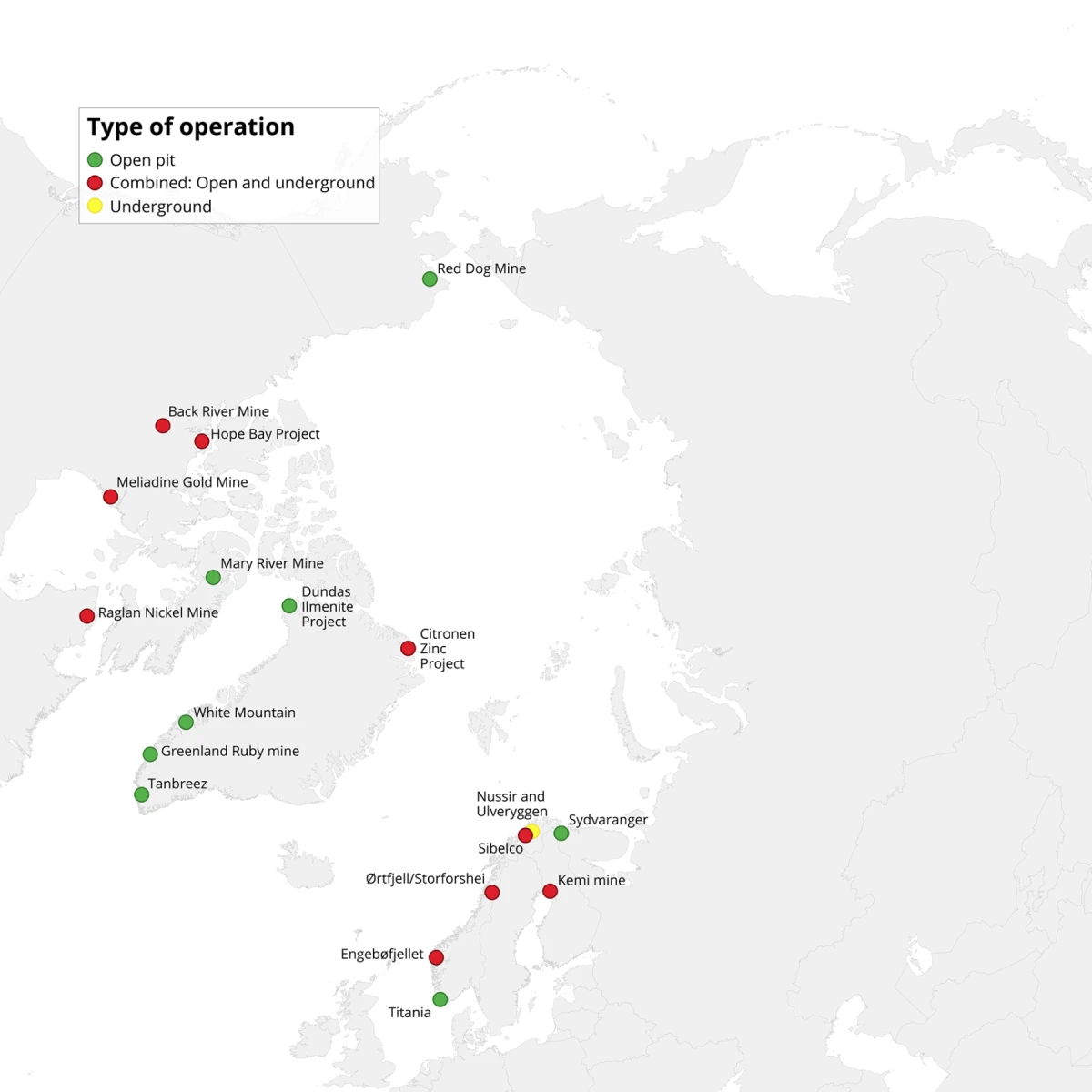
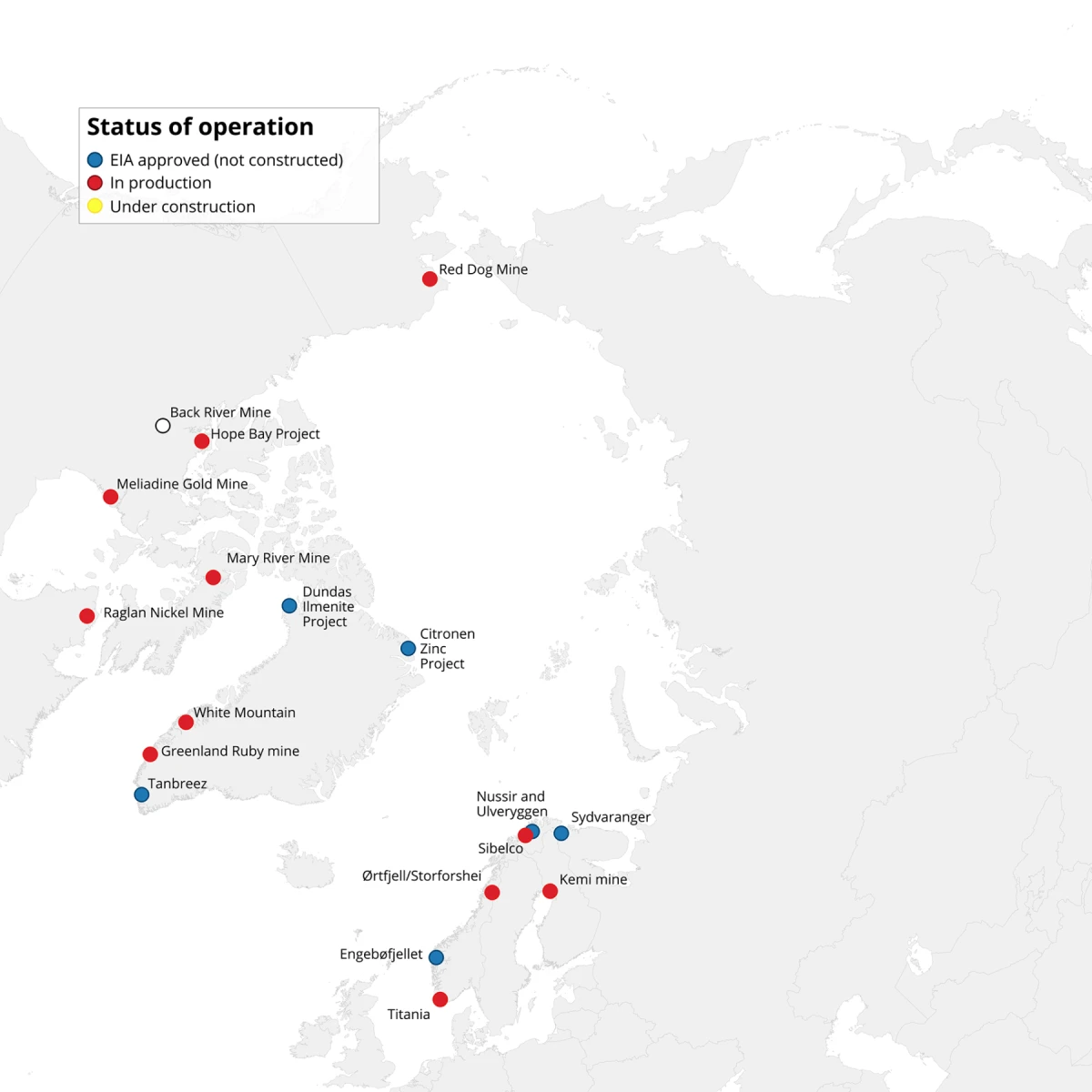
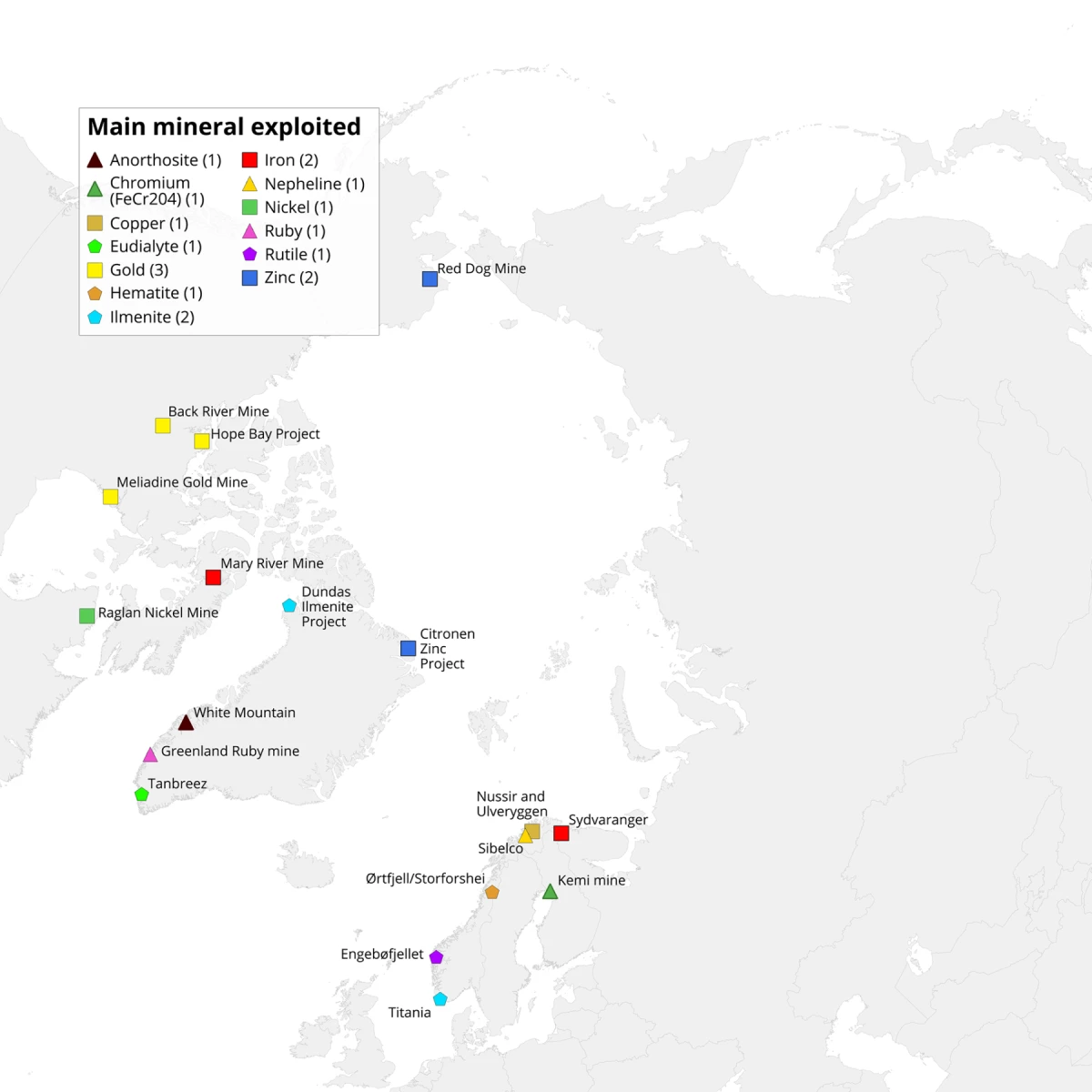
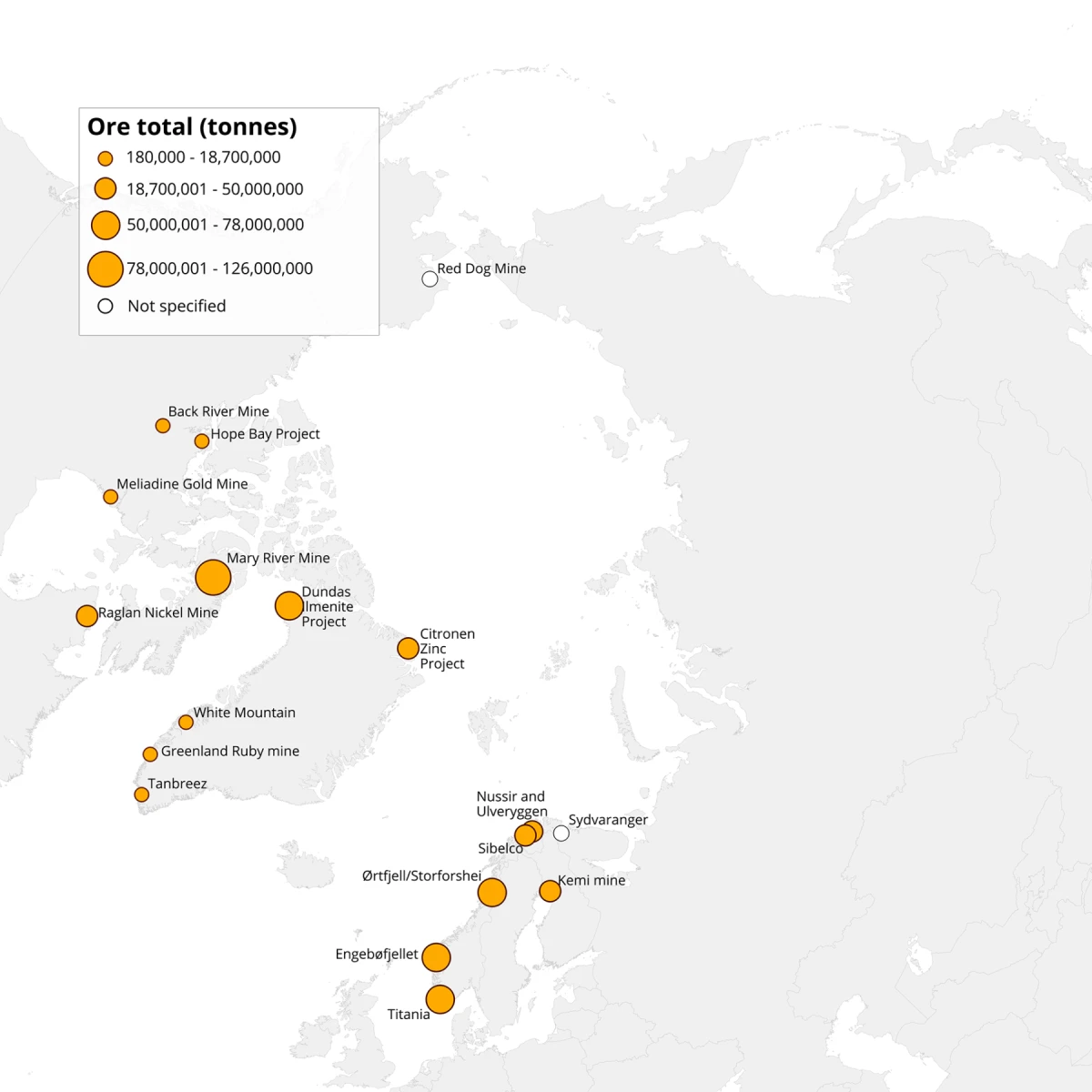
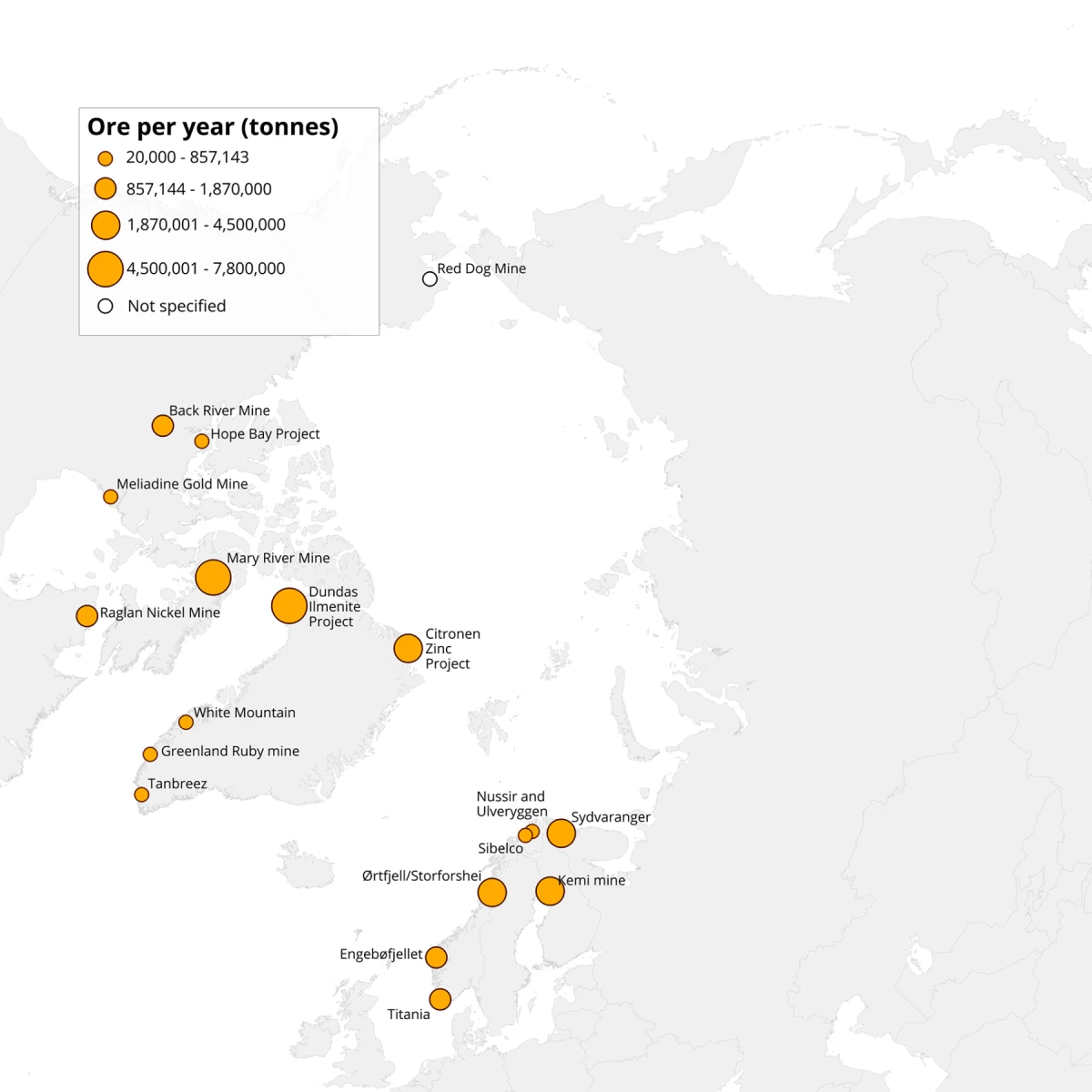
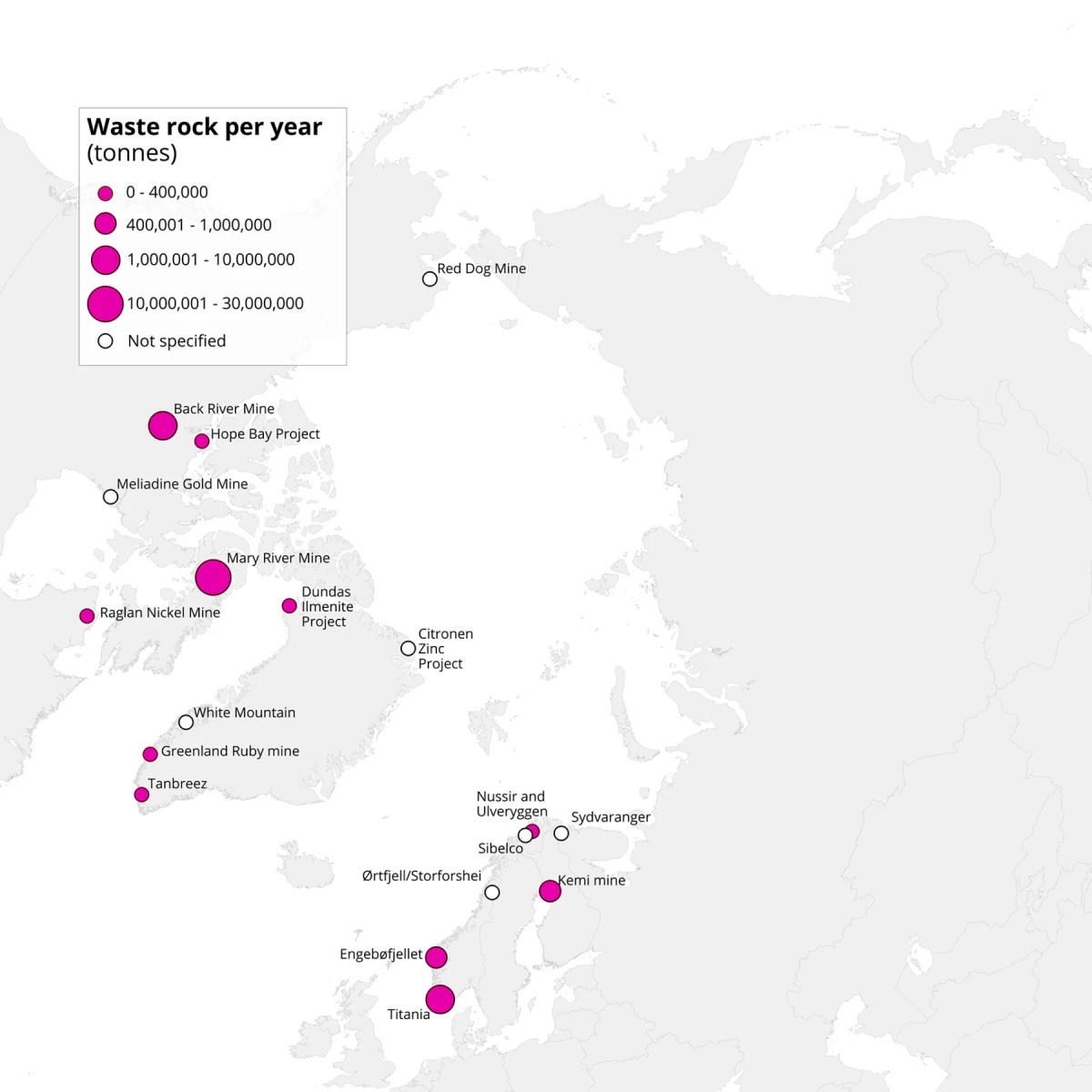
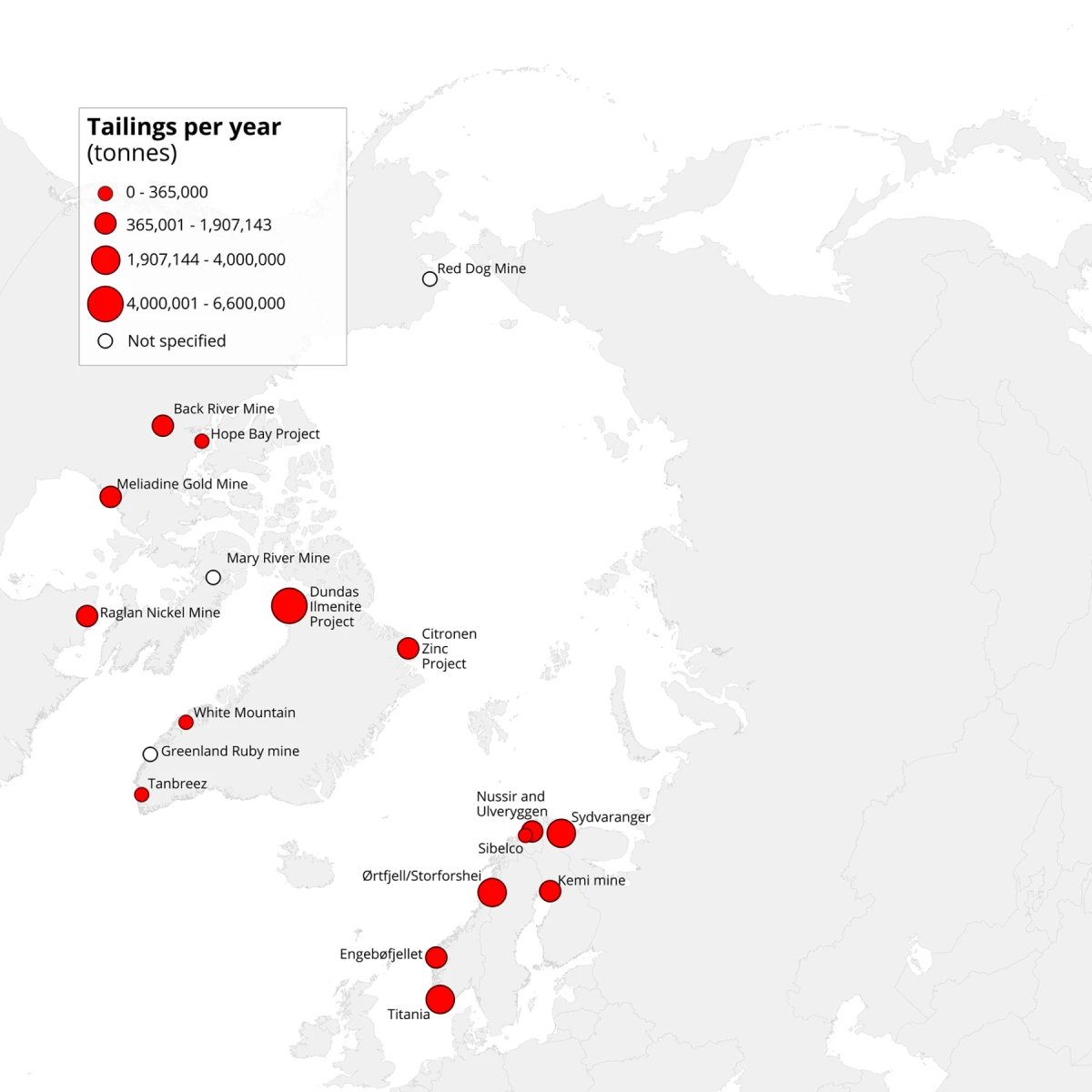
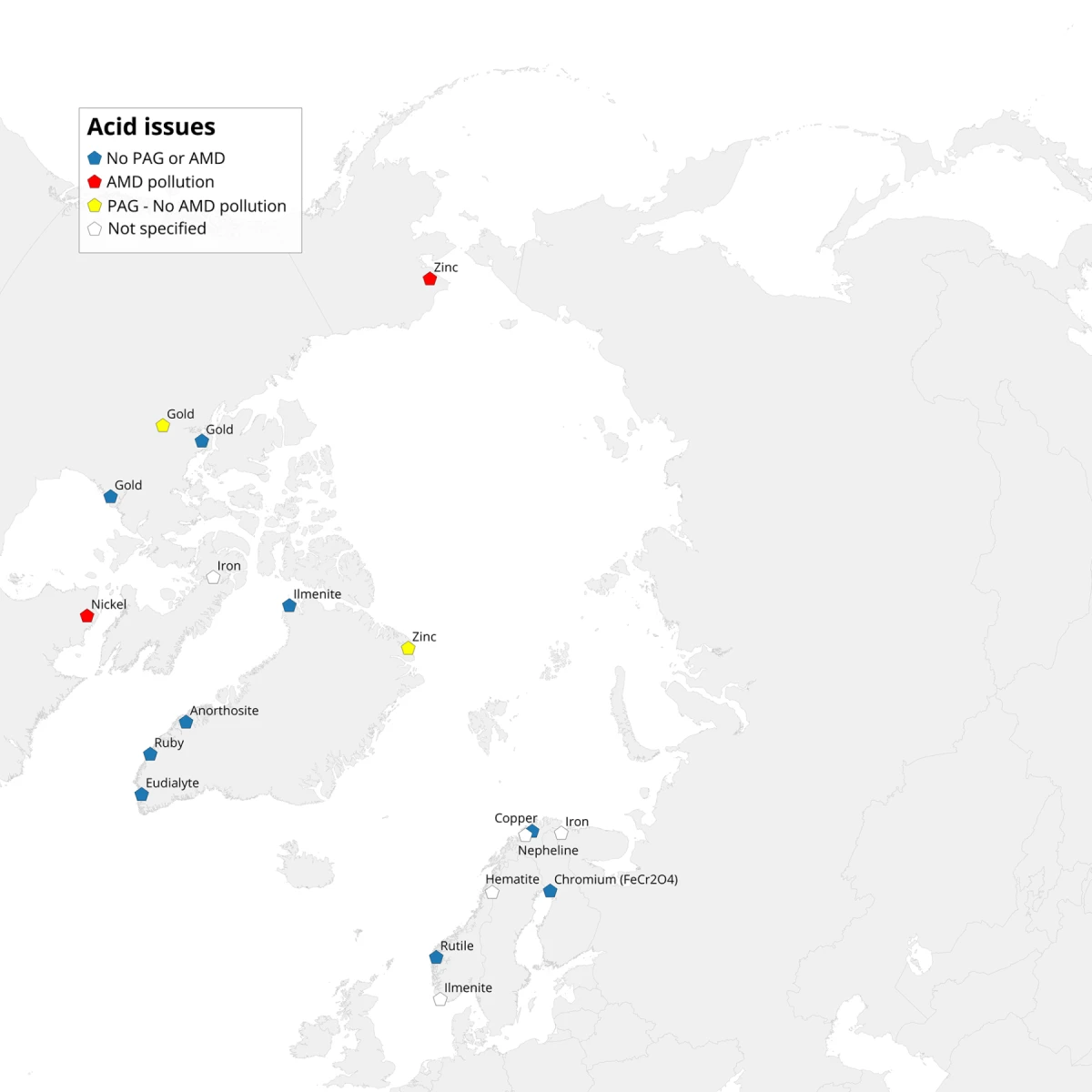
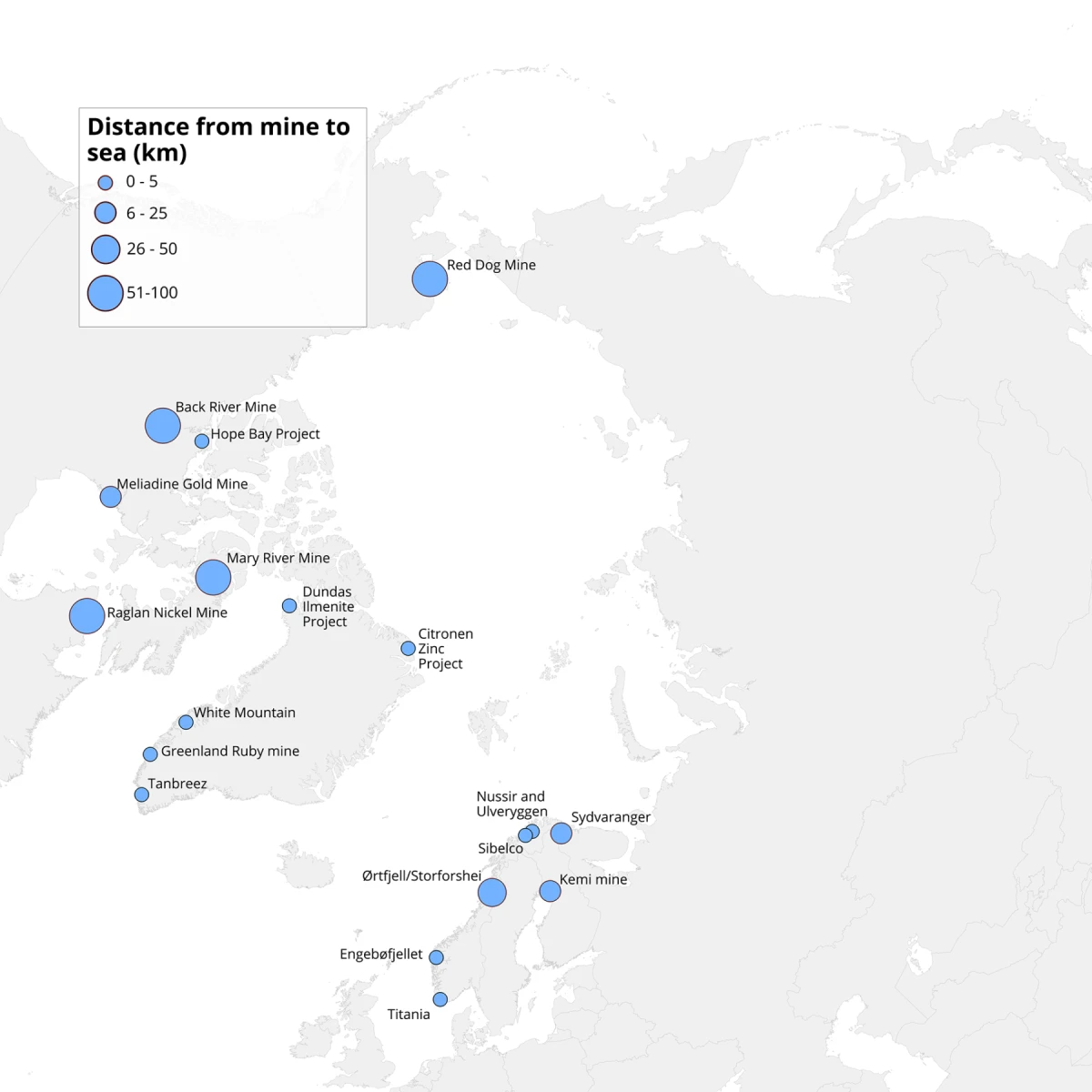
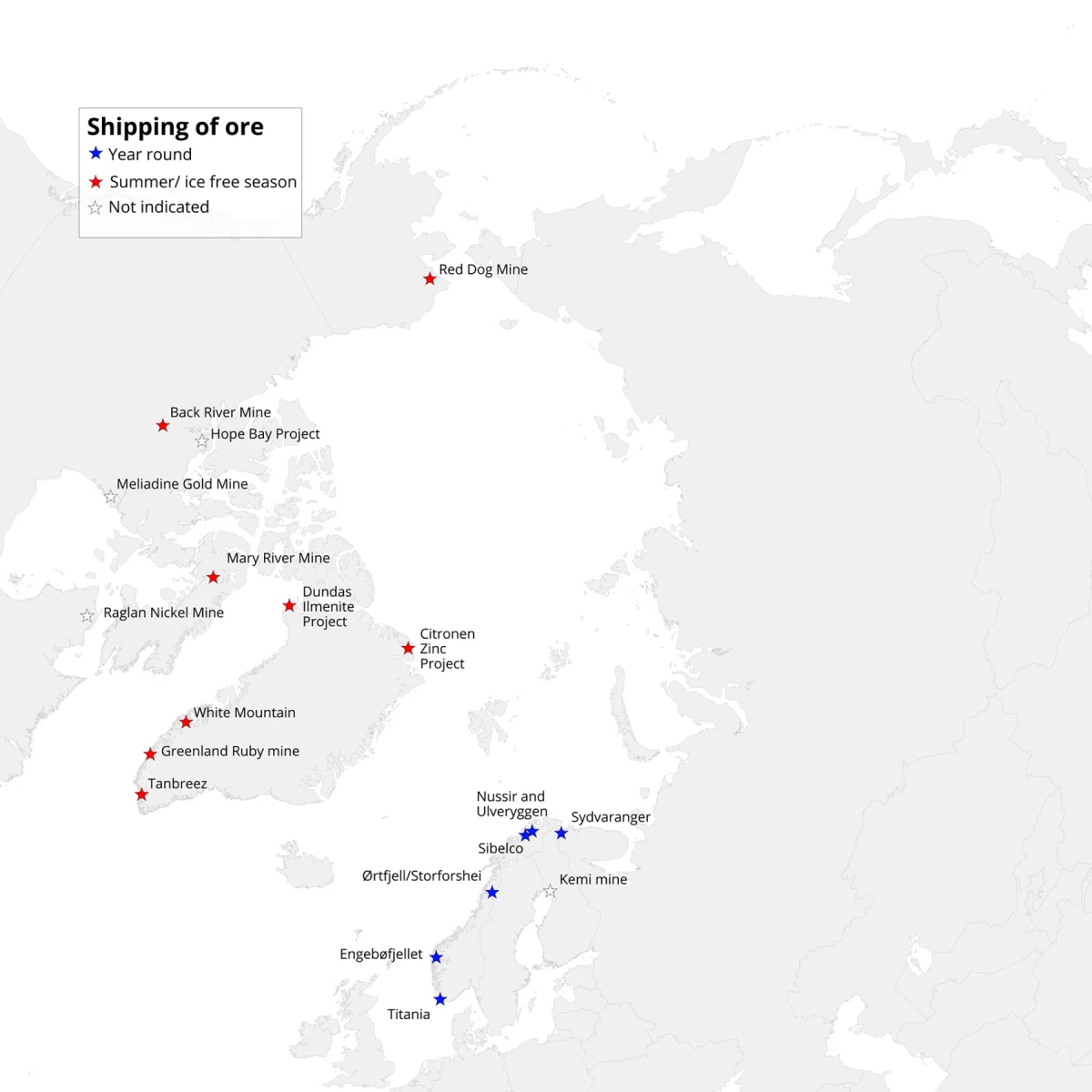

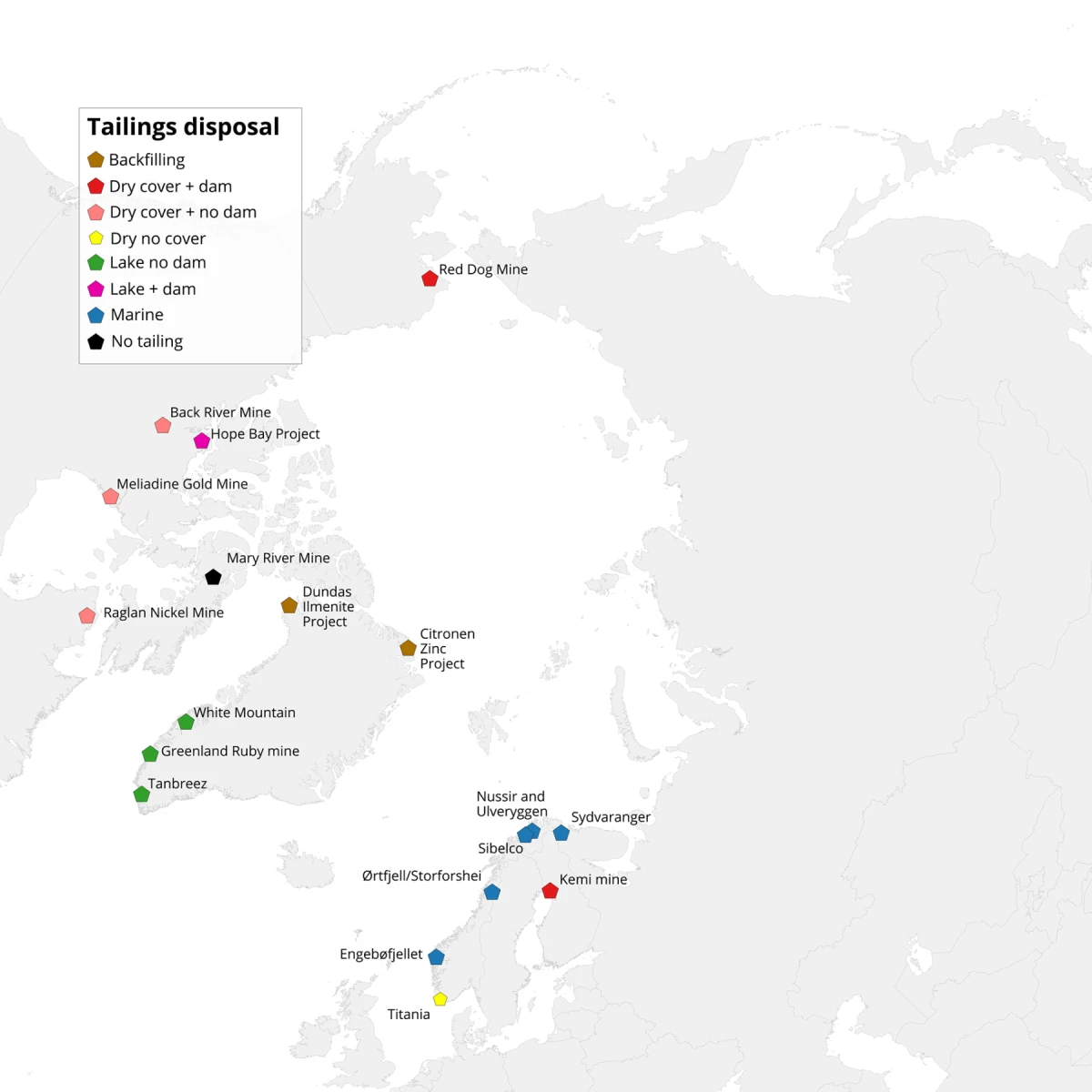

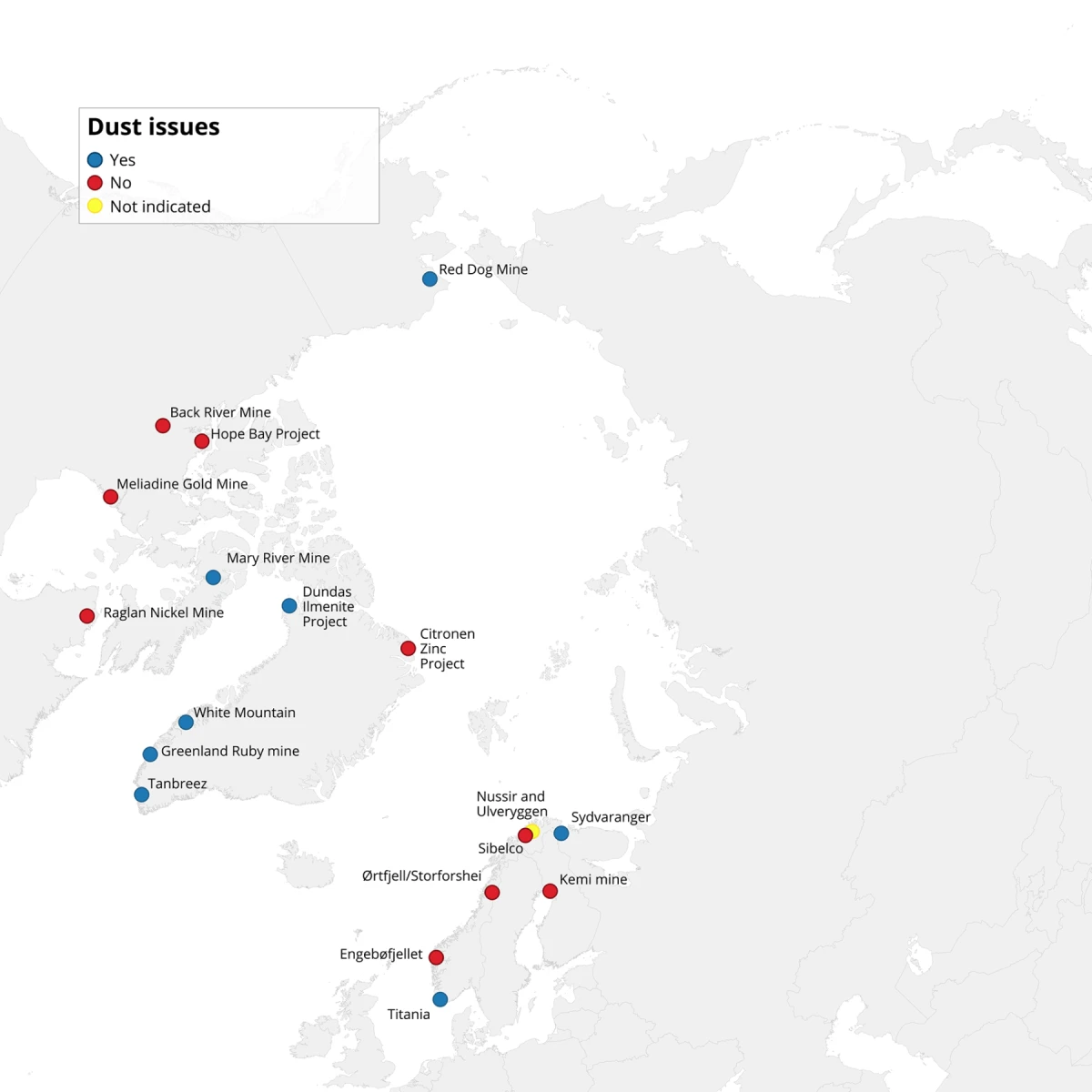
 Arctic Council Working Group
Arctic Council Working Group 